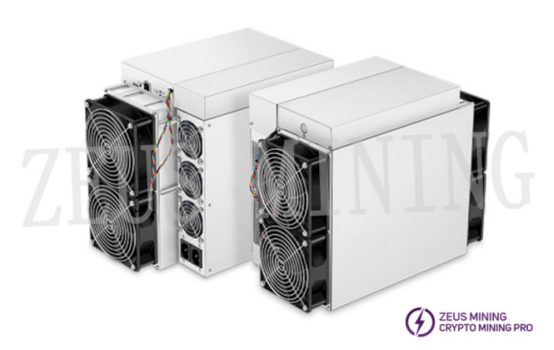ASIC Miner ICERIVER KAS KS0 Profitability In the realm of cryptocurrency mining, the Iceriver KAS KS0 miner has garnered widespread attention. Tailored specifically for the Kaspa network's KHeavyHash algorithm, it boasts high hashing power and low power consumption, making it an ideal choice for many miners. In this article, we will comprehensively assess IceRiver KS0 profitability while considering the Kaspa market conditions and the attributes of KS0 miner. Kaspa Market Dynamics Kaspa is a vibrant cryptocurrency network aimed at delivering high performance and scalability for everyday transactions. At the time of writing this article, the Kaspa coin trades at approximately $0.04959. But it's essential to note that cryptocurrency markets are highly susceptible to price volatility. Hence, investors must remain vigilant about market dynamics. Additionally, the Kaspa network's mining difficulty and reward mechanisms play a role in mining returns. Attributes of the IceRiver KS...
What is the Antminer BM1489 ASIC chip?
Antminer BM1489 ASIC chip is an ASIC chip on the Bitmain Antminer L7 hash board for mining Litecoin and Dogecoin.
In the integrated circuit industry, an ASIC is considered an integrated circuit designed for a specific purpose. The characteristic of ASIC is to design and manufacture special integrated circuits according to user requirements. The chips used for mining are called ASIC miner chips. Compared with general-purpose integrated circuits, ASICs have the advantages of smaller size, lower power consumption, improved reliability, improved performance, enhanced confidentiality, and reduced mass production costs. In terms of mining hash rate, ASICs are tens of thousands of times or higher than contemporary CPUs and GPUs, so ASIC chips on the market are also more popular than them.
In the integrated circuit industry, an ASIC is considered an integrated circuit designed for a specific purpose. The characteristic of ASIC is to design and manufacture special integrated circuits according to user requirements. The chips used for mining are called ASIC miner chips. Compared with general-purpose integrated circuits, ASICs have the advantages of smaller size, lower power consumption, improved reliability, improved performance, enhanced confidentiality, and reduced mass production costs. In terms of mining hash rate, ASICs are tens of thousands of times or higher than contemporary CPUs and GPUs, so ASIC chips on the market are also more popular than them.
 |
| Image courtesy of ZEUS MINING |
For example, Bitmain Antminer L7, which is currently sought after by the market, is a standard ASIC miner, and it is the best choice for mining LTC in the current market. The entire miner is equipped with 288 BM1489 ASIC chips specially designed for the Scrypt algorithm. Since the hash rate has always been the most popular quality for miners, and the L7 hash rate reached 9.5 Gh/s, compared to other LTC miners, the L7's hash rate has increased significantly, several times that of its miner model. Therefore, arguably the L7 is a more robust and efficient miner than any other device that mines LTC. At the same time, LTC has no plans to switch the network to the PoS concept in the current market, so you don't need to worry about your miners being out of date due to mining LTC and withdrawing from the market.
 |
| Image courtesy of ZEUS MINING |
 |
| Image courtesy of ZEUS MINING |
The hash rate of Antminer L7 reaches 9.5 Gh/s, which is equivalent to the sum of the hash rate of 20 Antminer L3+, which aims to be the most potent miner for mining LTC and DOGE. If calculated at the current market electricity cost and currency price of $0.01 per kWh, Antminer L7 can generate a daily profit of $39.7.
The power supply mode of the hash board still adopts the power supply method in series. The layout of the PCB LAYOUT of the hash board is reasonable, and the power supply is placed on both sides of the chip, which makes better use of the space. Note that the four hash boards can be connected to different power supplies, but each cannot be connected to multiple power supplies.
After a long-term high-speed operation of the miner, the chip is a highly vulnerable component, and its faults are generally manifested in two categories: electrical parameter damage and physical damage. The electrical parameter damage also includes damage caused by voltage and current exceeding the rated value. Physical damage includes chip breakage, deformation, etc. At this time, we need to maintain the regular operation of Antminer L7 by replacing the faulty BM1489 chip.
The power supply mode of the hash board still adopts the power supply method in series. The layout of the PCB LAYOUT of the hash board is reasonable, and the power supply is placed on both sides of the chip, which makes better use of the space. Note that the four hash boards can be connected to different power supplies, but each cannot be connected to multiple power supplies.
After a long-term high-speed operation of the miner, the chip is a highly vulnerable component, and its faults are generally manifested in two categories: electrical parameter damage and physical damage. The electrical parameter damage also includes damage caused by voltage and current exceeding the rated value. Physical damage includes chip breakage, deformation, etc. At this time, we need to maintain the regular operation of Antminer L7 by replacing the faulty BM1489 chip.
Comments
Post a Comment
Tell us your opinion